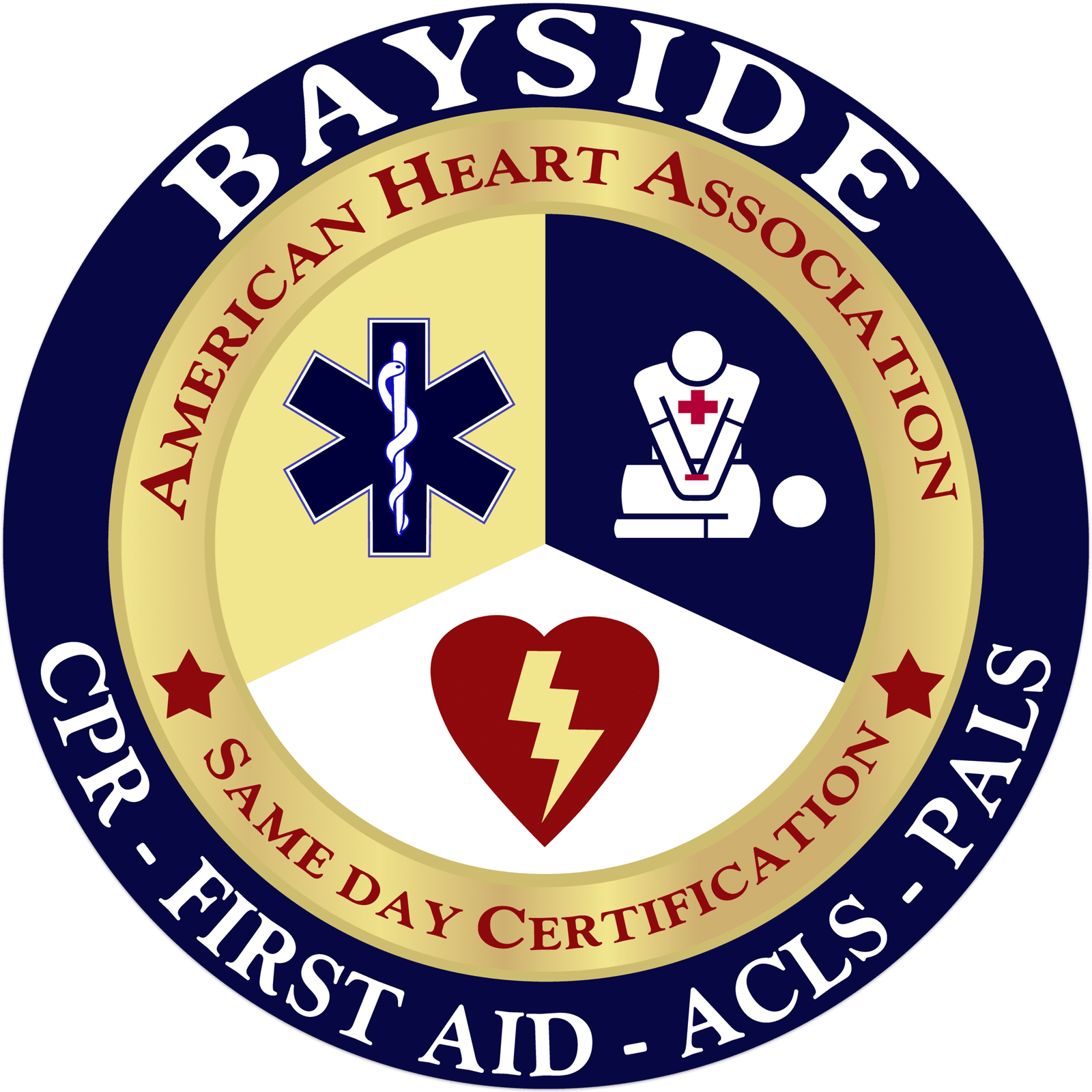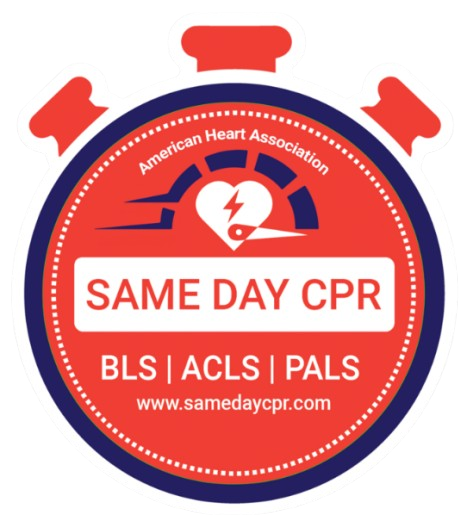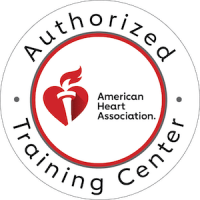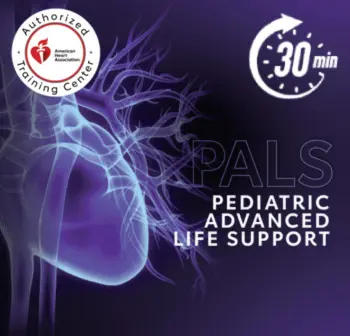
Pediatric Advanced Life Support (PALS)
PALS algorithm is a specialized training program and set of clinical guidelines designed for healthcare providers who respond to emergencies involving infants and children. The goal of PALS is to improve the quality of care provided to seriously ill or injured pediatric patients, both in and out of the hospital, and to increase survival rates. The PALS Algorithm Guide plays a crucial role in guiding healthcare providers through the structured, step-by-step management of life-threatening emergencies in infants and children. It provides clear, evidence-based decision pathways for quickly assessing, identifying, and treating pediatric patients in critical situations like cardiac arrest, respiratory failure, or shock.

Breakdown of PALS Algorithms

PALS Bradycardia Algorithm
The Pediatric Post-Resuscitation Care Algorithm helps you know what to do after a child’s heart starts pounding again. It guides you step by step to keep them stable and safe. It’s like a care plan for their body and brain after CPR.

Pediatric Cardiac Arrest Algorithm
The Pediatric Cardiac Arrest Algorithm walks you through what to do when a child’s heart stops. It helps you quickly start CPR, give shocks if required, and use meds the right way. It’s your step-by-step guide in a life-threatening emergency.

PALS Tachycardia Algorithm
The PALS Tachycardia Algorithm helps you handle a fast heart rate in a child. It directs you through checking if it's serious and what steps to take next. It’s your go-to technique for keeping calm and treating it the right way.

Pediatric Post-Resuscitation Care Algorithm
The Pediatric Post-Resuscitation Care Algorithm helps you know what to do after a child’s heart starts pounding again. It guides you step by step to keep them stable and safe. It’s like a care plan for their body and brain after CPR.

Pediatric Septic Shock Algorithm
The Pediatric Septic Shock Algorithm shows you what to do when a child is in septic shock. It allows you to quickly assess, give fluids, and use medications to stabilize them. It’s a step-by-step plan to treat a serious infection and prevent it from getting worse.
Importance of the PALS Algorithm Guide In Pediatric Care
The PALS Algorithm Guide is a lifesaver when every second counts in pediatric emergencies. It is important because of the following reasons:
- Serves an essential function by directing healthcare providers through an organized, step-by-step approach to managing critical, life-threatening situations in infants and children.
- Pediatric emergencies have better survival rates when healthcare providers are trained in advanced life support, as they can quickly respond with the right techniques and knowledge.
- Ensures that medical teams work together in a coordinated way, making sure each step in the care process is handled efficiently and effectively.
- Healthcare providers must regularly renew their PALS certification to stay updated on the latest life-saving techniques and ensure they are ready for any emergency.
Key Considerations of PALS Protocols
To ensure healthcare providers deliver fast, consistent, and effective care during pediatric emergencies, the PALS protocols are followed. Here are key considerations while following the algorithm:
01.
Early Recognition is Critical
The sooner you identify signs of distress, shock, or cardiac arrest in a child, the better the chances of a positive outcome. This includes watching for subtle signs like changes in breathing patterns, skin color, or level of consciousness. Early recognition allows for quicker intervention, potentially preventing the child’s condition from worsening into a more critical state.
02.
Assessment Sequence
The PALS protocol follows a clear, organized sequence to ensure no important steps are overlooked. Start by assessing the initial impression (how the child looks and behaves), then move on to a primary assessment (using the ABCDE approach to check Airway, Breathing, Circulation, Disability, and Exposure). Afterward, conduct a secondary assessment, which involves gathering a more detailed history and performing a physical exam to look for specific causes of the child's condition. After that diagnostic assessment, which involves tests like ECG, Oxygen Saturation, Measurement of BP, and Sugar Level. Finally, Ongoing Assessment and Post-Resuscitation Care ensure continuous monitoring and recovery management. This systematic approach guarantees thorough evaluation and care at every stage.
03.
High-Quality CPR
During pediatric resuscitation, high-quality CPR is vital. This means providing chest compressions at the right rate and depth (about 100-120 compressions per minute at a depth of 1/3 of the chest diameter), with minimal interruptions. Adjust compression techniques based on the child’s age,proper hand placement and ensuring full chest recoil between compressions.
04.
Team Communication
Effective communication within the team is crucial in any resuscitation effort. Use closed-loop communication (where instructions are repeated back and confirmed) to ensure everyone understands. This reduces mistakes and confusion, helping the team act swiftly and cohesively, which is especially important in high-stress situations like pediatric resuscitation.
05.
Age & Weight- Based Interventions
In the case of pediatric patients, dosages of medications, equipment sizes, and defibrillation energy need to be tailored to the child’s size. Since children come in many different sizes, it’s essential to adjust interventions based on age or weight to ensure safety and effectiveness. This includes calculating the correct medication doses and selecting the right-sized equipment for airway management and defibrillation.
06.
Age & Weight- Based Interventions
In the case of pediatric patients, dosages of medications, equipment sizes, and defibrillation energy need to be tailored to the child’s size. Since children come in many different sizes, it’s essential to adjust interventions based on age or weight to ensure safety and effectiveness. This includes calculating the correct medication doses and selecting the right-sized equipment for airway management and defibrillation.
07.
Post-Resuscitation Care Matters
After successful resuscitation, the work isn’t over. Focus on stabilizing the child’s condition by optimizing factors like oxygen levels, blood pressure, glucose levels, and body temperature. Additionally, monitoring neurological status closely is essential to assess any potential brain injury or other complications. The aim is to prevent further deterioration and provide the best possible outcome in recovery.
08.
Use Pediatric Equipment
Ensure you have the correct pediatric-sized equipment and tools available for the procedure. This includes airway devices, defibrillator pads, and vascular access supplies. Using adult-sized equipment on children can be ineffective or even harmful, so it’s crucial to have the right tools for the right size of patient.
PALS Vital Signs For Children
These PALS vital signs serve as a guideline to assess the child’s condition during an emergency or routine check-up and can help healthcare providers quickly identify any deviations from the norm that may indicate a medical issue.
- Here is a table summarizing the normal vital signs for children of different age groups, as per the PALS (Pediatric Advanced Life Support) protocol:
| Age | Heart Rate | Respiratory Rate | Normal Blood Pressure |
| Neonatal (0-28 Days) | 70-190 bpm | 30-60 | Systolic 60-80 mmHg Diastolic 30-45 mmHg |
| Infant (1-12 Months) | 80-160 bpm | 30-60 | Systolic 72-104 mmHg Diastolic 37-56 mmHg |
| Toddler (1-2 Years) | 80-130 bpm | 24-40 | Systolic 90-105 mmHg Diastolic 55-70 mmHg |
| Preschool (3-5 Years) | 80-120 bpm | 22-34 | Systolic 95-110 mmHg Diastolic 56-70 mmHg |
| School Age (6-11 Years) | 70-120 bpm | 18-30 | Systolic 97 to 120 mmHg Diastolic 57 to 80 mmHg |
| Adolescents (12+ Years) | 60-100 bpm | 12-16 | Systolic Less than 120 mmHg Diastolic Less than 80 mmHg |
Notes:
- Heart Rate: The heart rate decreases as the child ages, with newborns and infants having faster heart rates than older children.
- Respiratory Rate: Similarly, the respiratory rate decreases as the child grows.
- Blood Pressure: Blood pressure tends to rise as the child gets older, with systolic pressure increasing and diastolic pressure reaching adult levels by adolescence.
- Oxygen Saturation
Oxygen saturation, or SpO2 (%), indicates the percentage of hemoglobin in the arterial blood that is bound to oxygen. A normal SpO2 level is above 94% in children of all ages when breathing room air. Cyanosis ( bluish color in the skin,lips and nails) may occur when the saturation falls below 90%. Hypoxemia, or inadequate oxygen levels, is reflected by lower SpO2 readings.
- Temperature
The body temperature in children is kept within a narrow range, with a normal temperature ranging from 36-38°C (96.8-100.4°F). Hypothermia, defined as a temperature below 36°C, can increase the risk of mortality and make resuscitation more challenging. The PALS algorithm includes an evaluation for temperature abnormalities to quickly identify and manage these issues. On the other hand, hyperthermia (a temperature above 38.5°C) could indicate infection, neurological problems, or heat-related conditions.
Frequently Asked Questions
What is the PALS algorithm used for?
- The PALS algorithm guides healthcare providers in recognizing, managing, and treating life-threatening pediatric emergencies like cardiac arrest, bradycardia, and respiratory failure.
What is the most important action in pediatric cardiac arrest?
- High-quality CPR with minimal interruptions and early defibrillation for shockable rhythms are the most critical interventions.
How often is epinephrine given in PALS cardiac arrest?
- Epinephrine is administered every 3–5 minutes during pediatric cardiac arrest.
What are the reversible causes of cardiac arrest in children?
The reversible causes (H’s and T’s) include:
- Hypoxia, Hypovolemia, Hypo-/Hyperkalemia, Hypothermia
- Tension pneumothorax, Tamponade, Toxins, Thrombosis (cardiac/pulmonary)
According to the systematic approach algorithm, what are the correct assessments, pals?
- The correct assessments in the PALS algorithm are outlined through the Primary and Secondary Assessments, using the ABCDE approach.


